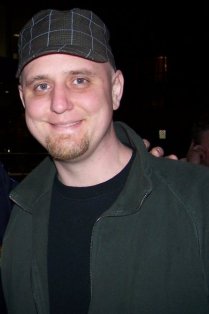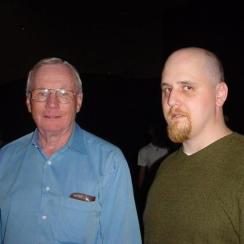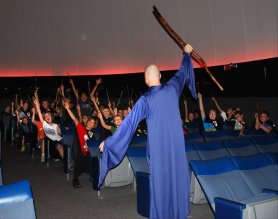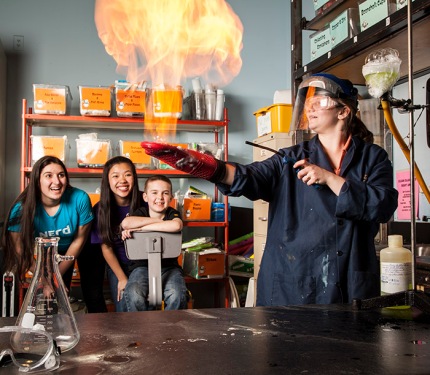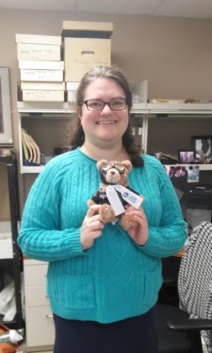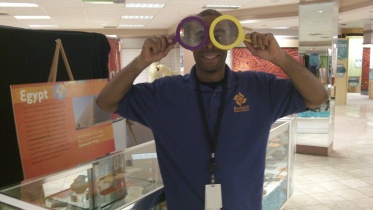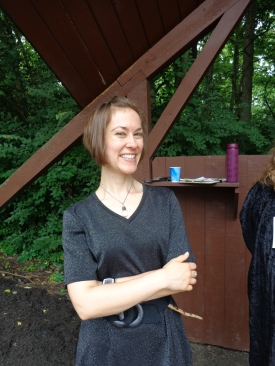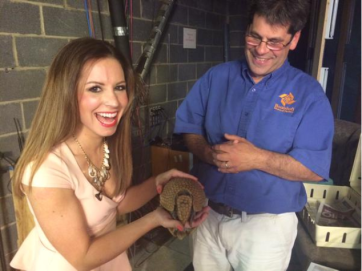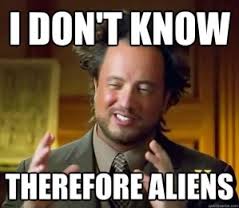It’s not a secret; here at the Boonshoft Museum, we love all things Science, Technology, Engineering, and Math, and our goal is to inspire children and their families to do the same. While we’re in the business of engaging our guests with STEM education that will hopefully spark a lifetime of commitment to STEM fields of study, we realize that there are many children whose passion will lie outside of a traditional STEM Career–and that’s okay!
What is important, however, is for parents and children to understand that all jobs in the future will require STEM skills in some fashion, whether you’re a history teacher, small business owner, or the CEO of a Fortune 500 company. You might remember reading about the importance of STEM from our Educators, but this time we asked our support and administrative staff just how much STEM they use in their jobs every day; and the answer? Much more than you think:
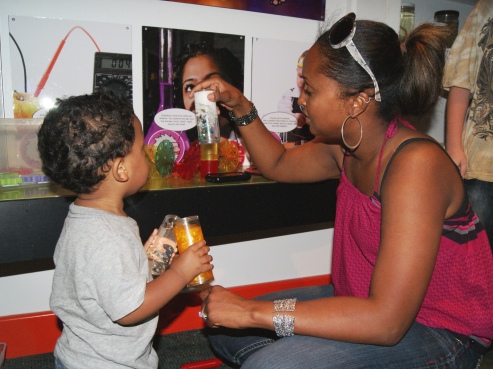
Families explore hands-on science.
Dona Vella , Vice President, Development and External Relations
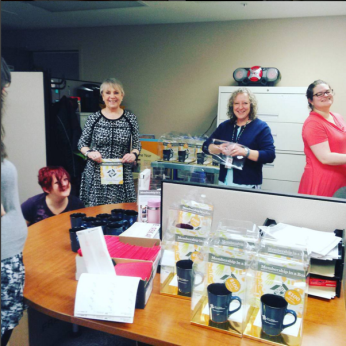
Dona pitching in to help craft some Memberships in a Box
“Encouraging children to build science, technology, engineering, and math skills is a big part of our mission at the Boonshoft Museum, and while I understand that not all children will grow up and become mathematicians and physicists, it is important for current and future generations to have these STEM skills in order to flourish in their careers.
I use math every day to evaluate budgets, develop fundraising strategies, and analyze data. My entire team and I use technology to help us streamline and work more effectively. Because we rely on customers, committed sponsors, and generous donors in order to help us fulfill our mission, it is so important that we are good stewards of the funds that we receive, and by using technology, we are able to do that by working as efficiently as possible.”
Lauren Lemons, Communications Coordinator
“As the Museum’s Communications Coordinator, I am responsible for writing copy, digital marketing campaigns, and creative content, as well as evaluating metrics that pertain to our marketing platforms. My job starts with creativity, is implemented with technology, and is analyzed with math–so I would definitely say STEM is essential to doing my job successfully. I spend a lot of time working with graphics, editing and creating code, and using math to evaluate what makes our marketing campaigns successful.
In fact, though I do not have a traditional STEM job, like a doctor or engineer, I do have a Bachelor’s of Science in Marketing, which means I had to take a lot of business and economics-based math and science classes in college. I believe this has certainly come in handy in my career and makes me more well-rounded for my position here at the Museum. I would encourage anyone, no matter what career path they will eventually take, to seize every chance they have to hone their STEM skills, because all jobs will require some degree of STEM in the future.”
Angela Shaffer, Senior Manager, Guest Services and Gift Shops
“As an English and Classical Humanities student in college, I didn’t anticipate managing a database in my post-college career! However, as the person responsible for managing the Society’s point-of-sale database, CounterPoint, that is exactly what I do on a daily basis. It is my job to ensure that anything the Society “sells”–including admissions tickets, memberships, gift shop merchandise, group visits, and Astronomy programs, just to name a few–is entered and managed properly within CounterPoint. It is extremely detail-oriented work that incorporates many other fields of study, such as information technology and accounting; I work closely with our business office and many other departments within the Society to make sure that all information is set up and managed correctly and that both software and hardware systems function fully. It’s challenging and rewarding work that requires a lot of STEM skills!”
Sarah Aisenbrey, Dayton Society of Natural History Registrar
“As the Registrar of the Dayton Society of Natural History, I work with many types of technology, including (and most importantly) our collections databases. Databases, which are computerized tables that keep track of information, are a technology you probably use every day–Facebook, Amazon, and Google are all typical examples. Even though the artifacts we curate can be thousands of years old, we use current technology to help us research, exhibit, publicize, and track all 1.7 million of them. Successfully mastering the use of collections databases takes a lot of skill–I have to be very organized, up-to-date on the newest technology, and ready to field questions about the collection at a moment’s notice. Practicing and constantly improving these skills has helped me to excel as the DSNH’s Registrar.”
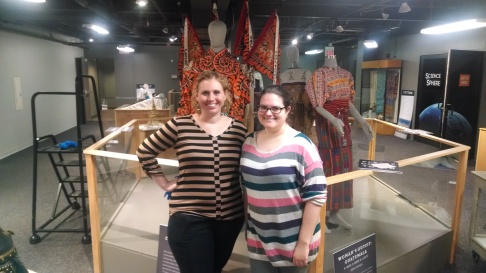
Jill, our Associate Curator and Sarah, our Registrar, before the opening of Cut From the Same Cloth.
Jimmy Adams & Caleb Orecchio, Graphic Artists
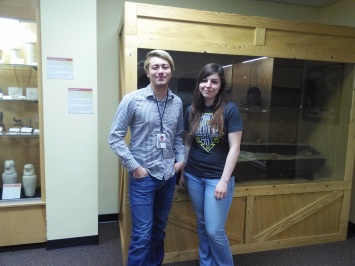
Jimmy and one of our SAA externs in the African Room.
“Graphic Designers use technology every day, specifically Adobe Creative Suite. We also have to understand how to use the printing presses, use measurements for production, and I use a lot of math when working with budgets. I would say our job requires as much STEM as it does art and creativity.” – Jimmy Adams
“Besides the obvious use of technology, there is also a psychology that goes into creating advertising pieces. We use science, geometry, and color to make things pleasing the eye.” – Caleb Orecchio
Phillip Dunlevy, Facilities Supervisor
“I need things like Technology, Engineering, and Math to get my job done and keep the Museum in top shape! Our power, HVAC, lights–they all run on computers. I also use a lot of math when measuring wood and steel to cut when there are things that need to be fixed around the Museum.”
Marge Forsthoefel, Supervisor, Accounting
“I’m not a scientist or engineer, but I do use math every single day in Accounting. Whether I am calculating sales tax reporting using different percentages for different counties in Ohio, accounts receivable, or balancing sales against cash, my job requires a lot of math and reasoning!
Because our sales come through a point-of-sale system, either at the Museum or online, I also need to understand how to use online sales reporting systems, credit card reporting systems, management information systems, and I need to export data in order to balance our daily sales. Accounting is no longer handwritten ledgers, but all done using accounting programs, which are most certainly technology-based.”
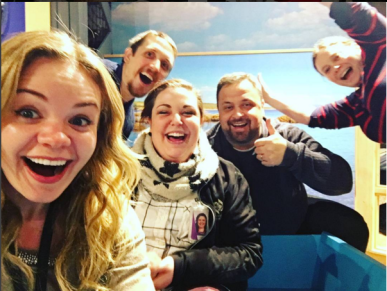
Erika, having a blast with our Education Crew
Erika Asher, Education Coordinator
“I’ve learned a lot about science and science-based concepts because I frequently have to talk to teachers about the programs that we provide to their students. I also do a lot of math when calculating numbers for programs, billing, etc.
Being well-versed in technology, specifically the use of databases, is something else that is necessary for my job. We keep schedules, membership information, and book programs with information that are all stored in databases.”
So, what did we learn? It’s safe to say that there isn’t a single staff member at the Boonshoft Museum that doesn’t use STEM in some form. Our goal? To make Science, Technology, Engineering, and Math so accessible to children and their families that STEM no longer seems like a burden or a challenge, but more like a fun tool children use to explore, problem solve, and invent. While we can’t expect all children to grow up to become the next Albert Einstein, we can provide children with some of the tools necessary to poise them for a future of unlimited successes and the confidence to become accomplished problem solvers, in whatever career they choose.
If you want to participate in some STEM fun at the Boonshoft Museum, consider signing up for Summer Discovery Camps or visit the Museum tomorrow, March 19, on Super Science Saturday, for a FREE day of fun, hands-on STEM activities!
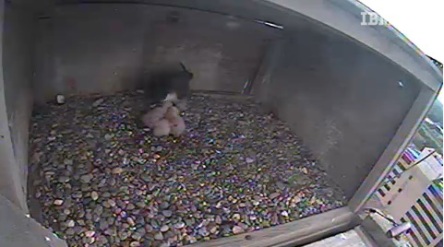 The third chick is a bit smaller than the two others that hatched 5 and 7 days ago. The parents take care of the chicks keeping them warm and providing food for them. The chicks are unable to thermoregulate well for the first 10 days of their lives.
The third chick is a bit smaller than the two others that hatched 5 and 7 days ago. The parents take care of the chicks keeping them warm and providing food for them. The chicks are unable to thermoregulate well for the first 10 days of their lives.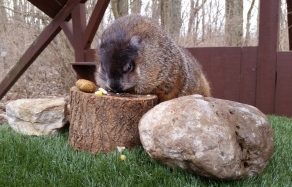










 The first female African American astronaut in space, Mae Jemison is a favorite of our Astronomy Department and Museum Educator, Robin Ramsey. In 1992 from September 12 to 20, Jemison flew into space aboard the Endeavour as a mission specialist. Her love for the sciences as a child followed her through her adulthood, as she attended Stanford University and received a bachelor degree in chemical engineering and then attended Cornell Medical College. Jamison was not only the first African American female astronaut in space, she is our favorite kind of philanthropist, creating the Dorothy Jemison Foundation for Excellence, which encourages children’s interests in science!
The first female African American astronaut in space, Mae Jemison is a favorite of our Astronomy Department and Museum Educator, Robin Ramsey. In 1992 from September 12 to 20, Jemison flew into space aboard the Endeavour as a mission specialist. Her love for the sciences as a child followed her through her adulthood, as she attended Stanford University and received a bachelor degree in chemical engineering and then attended Cornell Medical College. Jamison was not only the first African American female astronaut in space, she is our favorite kind of philanthropist, creating the Dorothy Jemison Foundation for Excellence, which encourages children’s interests in science!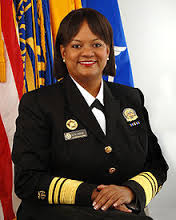 Tiarra Callahan, our Special Events Coordinator admires Regina Benjamin, humanitarian and U.S. Surgeon General from 2009-2013.
Tiarra Callahan, our Special Events Coordinator admires Regina Benjamin, humanitarian and U.S. Surgeon General from 2009-2013.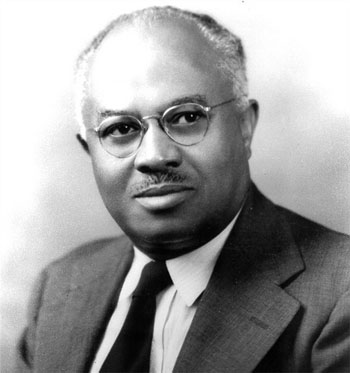 Certainly, our Live Animals Department are huge fans of all-things-animals, but one of our Keepers, Steve, is a big fan of Emmett W. Chappelle.
Certainly, our Live Animals Department are huge fans of all-things-animals, but one of our Keepers, Steve, is a big fan of Emmett W. Chappelle. Jeff White, the Boonshoft Museum of Discovery Springfield’s site manager is not only an educator he is a trained archaeologist—so naturally, he admires Associate Professor of Anthropology, Theresa Singleton. She was the first African-American to receive a PhD with a concentration in archaeology and the first African American to receive a J.C. Award in Historical Archaeology. Singleton specializes in Historical Archaeology, African American History & Culture, Slavery in plantation America, and Archaeology of the African Diaspora.
Jeff White, the Boonshoft Museum of Discovery Springfield’s site manager is not only an educator he is a trained archaeologist—so naturally, he admires Associate Professor of Anthropology, Theresa Singleton. She was the first African-American to receive a PhD with a concentration in archaeology and the first African American to receive a J.C. Award in Historical Archaeology. Singleton specializes in Historical Archaeology, African American History & Culture, Slavery in plantation America, and Archaeology of the African Diaspora.